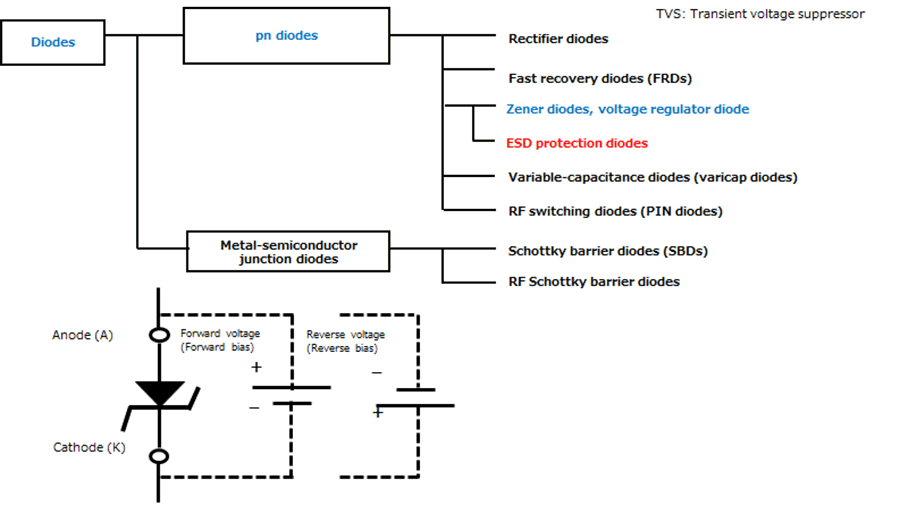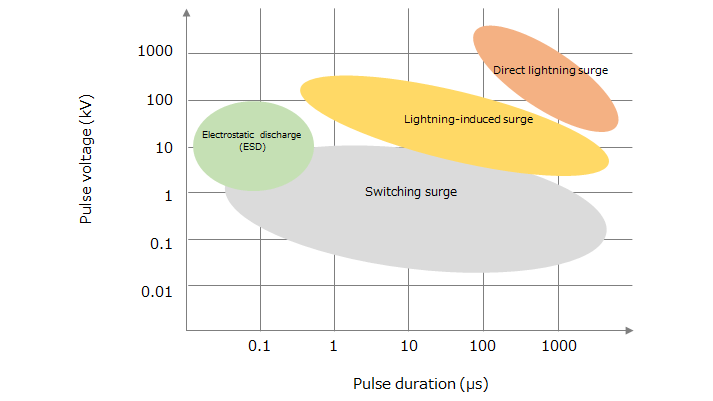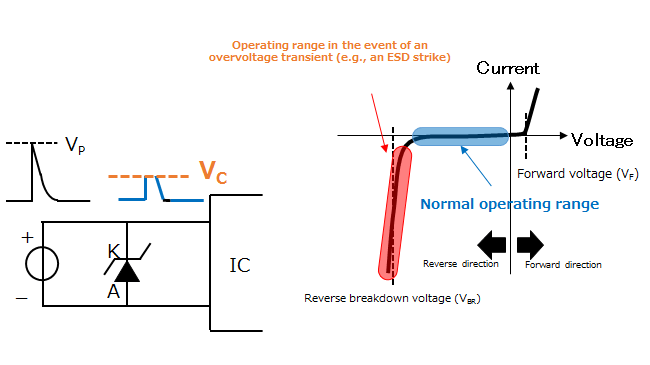- 半導體首頁
-
應用Automotive
Body Electronics
xEV
In-Vehicle Infotainment
Advanced Driver-Assistance Systems (ADAS)
Chassis
IndustrialInfrastructure
BEMS/HEMS
Factory Automation
Commercial Equipment
Consumer/PersonalIoT Equipment
Healthcare
Wearable Device
Mobile
Computer Peripherals
-
產品車用元件
Discrete Semiconductor
Diodes
電晶體
通用邏輯IC
Analog Devices
Digital Devices
Wireless Devices
※
: Products list (parametric search)
功率半導體※
: Products list (parametric search)
隔離器/固態繼電器Photocouplers
Digital Isolators
※
: Products list (parametric search)
MOSFETsIGBTs/IEGTs雙極性電晶體※
: Products list (parametric search)
Diodes※
: Products list (parametric search)
微控制器馬達驅動 ICs智能功率 ICs※
: Products list (parametric search)
電源管理 ICs線性 ICs※
: Products list (parametric search)
通用邏輯 ICs線性影像感測器其他產品其他產品
※
: Products list (parametric search)
-
開發/設計支援
開發 / 設計支援
-
技術知識
- 購買管道
- 型號 & 關鍵字搜尋
- 交叉搜尋
- 參數搜尋
- 線上庫存查詢跟購買
This webpage doesn't work with Internet Explorer. Please use the latest version of Google Chrome, Microsoft Edge, Mozilla Firefox or Safari.
型號需要超過三個文字以上 Search for multiple part numbers fromhere.
The information presented in this cross reference is based on TOSHIBA's selection criteria and should be treated as a suggestion only. Please carefully review the latest versions of all relevant information on the TOSHIBA products, including without limitation data sheets and validate all operating parameters of the TOSHIBA products to ensure that the suggested TOSHIBA products are truly compatible with your design and application.Please note that this cross reference is based on TOSHIBA's estimate of compatibility with other manufacturers' products, based on other manufacturers' published data, at the time the data was collected.TOSHIBA is not responsible for any incorrect or incomplete information. Information is subject to change at any time without notice.
型號需要超過三個文字以上
1-1 Reverse breakdown voltage
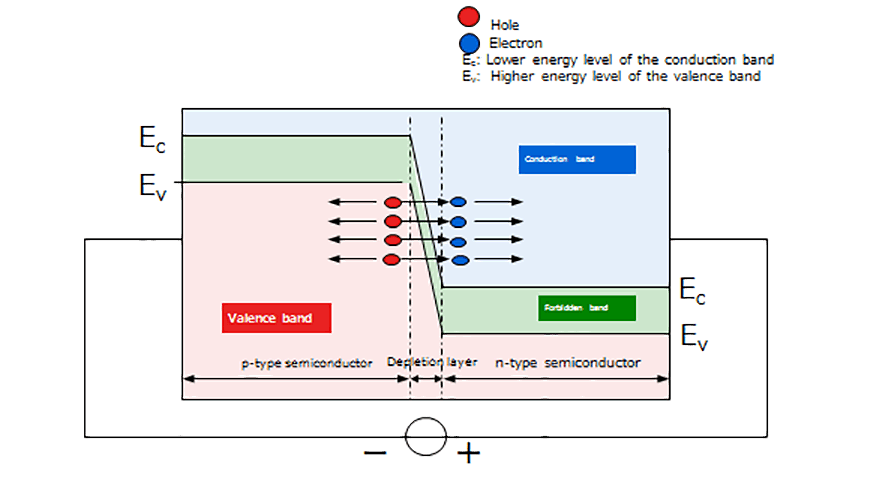
The reverse breakdown voltage is determined by Zener breakdown or avalanche breakdown.
Zener breakdown
When a pn junction is reverse-biased, a depletion layer extends across the pn junction. An electric field causes a gap between the valence band of the p-type region and the conduction band of the n-type region to decrease inside the depletion layer. As a result, electrons tunnel from the valence band of the p-type region to the conduction band of the n-type region because of quantum tunneling. Zener breakdown is a phenomenon in which the tunneling of electrons across the depletion region causes a sudden increase in reverse current. Figure 1.3 illustrates Zener breakdown.
Avalanche breakdown
When a pn junction is reverse-biased, a small quantity of electrons passes through the pn junction. These electrons are accelerated in the depletion layer by an electric field, acquiring large kinetic energy. The accelerated electrons collide with the atoms in a crystal lattice, ionizing them and creating electron holes. The electrons of these atoms are excited to the conduction band and knocked out, becoming free electrons. The free electrons are also accelerated and collide with other atoms, creating more electron-hole pairs and leading to further knocking-out processes. This phenomenon is called avalanche breakdown.
Comparison of avalanche breakdown and Zener breakdown
Since diodes with high breakdown voltage are lightly doped, they form a wide depletion layer (forbidden band). Conversely, since diodes with low breakdown voltage are heavily doped, they form a thin depletion layer (forbidden band). When a diode has a wide depletion layer, electron tunneling (Zener breakdown) is less likely to occur, causing avalanche breakdown to become more predominant. In the case of a heavily doped diode with a thin depletion layer, Zener breakdown is more like to occur. As temperature increases, the width of the forbidden band (Eg) decreases, contributing to the Zener effect. In addition, as temperature increases, the lattice vibration of a semiconductor increases, causing its carrier mobility to decrease. As a result, avalanche breakdown becomes less likely to occur. Zener breakdown voltage decreases with temperature whereas avalanche breakdown voltage increases with temperature. Generally, Zener breakdown is predominant below roughly 6 V whereas avalanche breakdown is predominant above roughly 6 V. It should be noted that even diodes of the same product series exhibit different temperature characteristics.
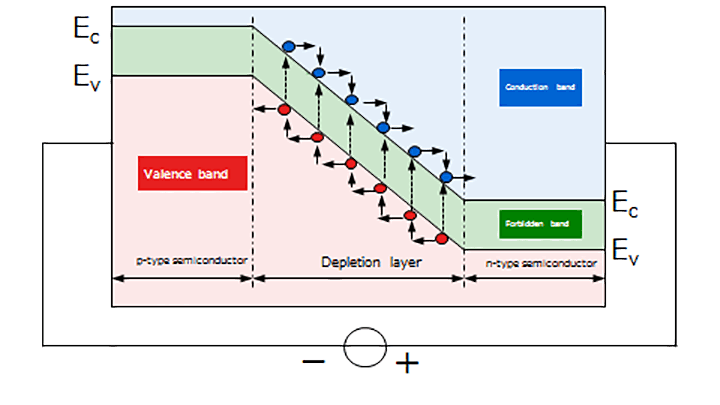
1 What is a TVS diode (ESD protection diode)?
- 2 Basic operations of TVS diodes (ESD protection diodes)
- 3 Key electrical characteristics of TVS diodes (ESD protection diodes)
- 4 Selection guidelines for TVS diodes (ESD protection diodes)
- 5 Layout considerations for TVS diodes (ESD protection diodes)
- 6 Absolute maximum ratings of TVS diodes (ESD protection diodes)
- 7 Electrical characteristics of TVS diodes (ESD protection diodes)
Related information
- Product Web Page
TVS Diodes (ESD protection diodes) - Applidcation Notes
Diode - FAQ
TVS diodes (ESD protection diodes) - Parametric searches for all Toshiba TVS diode (ESD protection diodes) produ cts are available here:
Parametric search - Stock Check & Purchase Toshiba TVS diode (ESD protection diodes) here
Stock Check & Purchase


